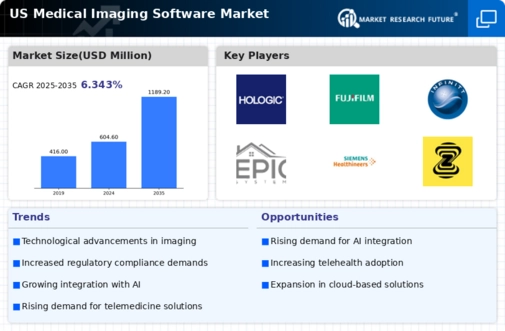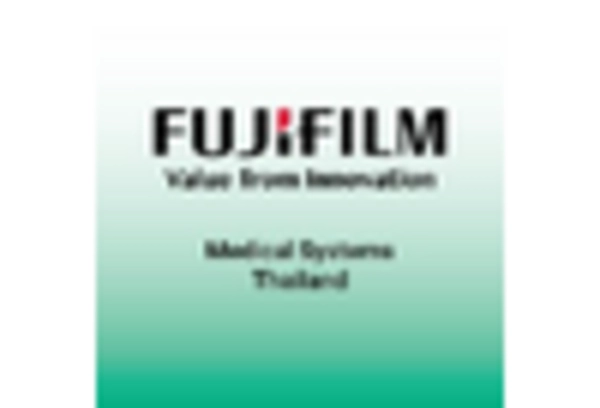Rising Demand for Diagnostic Imaging
The increasing prevalence of chronic diseases and the aging population are contributing to a heightened demand for diagnostic imaging services. As healthcare providers strive to deliver timely and accurate diagnoses, the medical imaging-software market is poised for growth. In the US, the demand for imaging services is expected to rise by 5% annually, driven by the need for early detection and monitoring of conditions such as cancer and cardiovascular diseases. This trend necessitates the development of advanced imaging software that can support healthcare professionals in interpreting complex imaging data, thereby enhancing clinical decision-making and patient care.
Increased Focus on Patient-Centric Care
The medical imaging-software market is witnessing a shift towards patient-centric care, which emphasizes personalized treatment plans and improved patient experiences. Healthcare providers are increasingly adopting imaging software that enhances communication with patients, providing them with clearer insights into their conditions. This trend is likely to drive the demand for user-friendly imaging solutions that prioritize patient engagement. As a result, the market is expected to grow, with projections indicating a potential increase of 6% in software adoption rates among healthcare facilities focused on patient-centered approaches. This focus on patient care is reshaping the landscape of the medical imaging-software market.
Growing Investment in Healthcare Infrastructure
The medical imaging-software market is benefiting from increased investment in healthcare infrastructure across the US. Government initiatives and private sector funding are driving the modernization of healthcare facilities, leading to the acquisition of advanced imaging technologies and software solutions. Recent data suggests that healthcare spending in the US is projected to reach $4 trillion by 2025, with a significant portion allocated to imaging services. This influx of capital is likely to enhance the capabilities of medical imaging-software, enabling healthcare providers to deliver high-quality diagnostic services. As infrastructure improves, the demand for innovative imaging software is expected to rise, further propelling market growth.
Technological Advancements in Imaging Techniques
The medical imaging-software market is experiencing a surge due to rapid technological advancements in imaging techniques. Innovations such as 3D imaging, molecular imaging, and hybrid imaging systems are enhancing diagnostic accuracy and efficiency. These advancements are not only improving patient outcomes but also driving the demand for sophisticated software solutions that can process and analyze complex imaging data. According to recent estimates, the market for advanced imaging technologies is projected to grow at a CAGR of approximately 8% over the next five years. This growth is likely to stimulate further investment in medical imaging-software, as healthcare providers seek to integrate these cutting-edge technologies into their practices.
Integration of Imaging Software with Electronic Health Records (EHR)
The integration of medical imaging-software with Electronic Health Records (EHR) systems is becoming increasingly vital in the healthcare landscape. This integration facilitates seamless access to patient imaging data, improving workflow efficiency and enhancing patient care. As healthcare organizations prioritize interoperability, the medical imaging-software market is likely to benefit from this trend. Reports indicate that approximately 70% of healthcare providers are investing in solutions that enable better integration of imaging data with EHR systems. This shift not only streamlines operations but also supports comprehensive patient management, making it a key driver for the growth of the medical imaging-software market.

















Leave a Comment